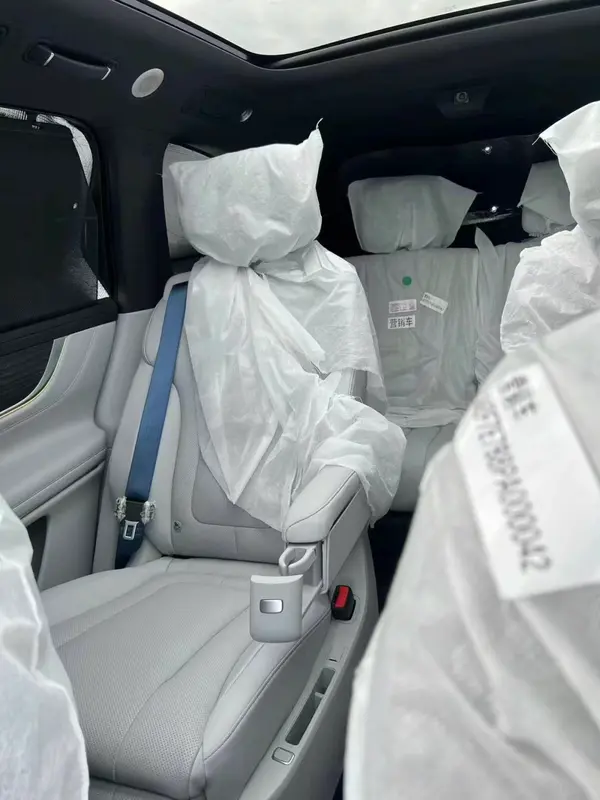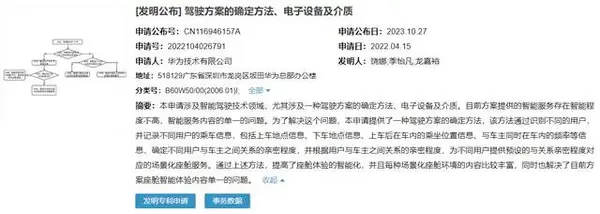Huawei added a 3D face camera to the M7 model, whose main function is to monitor whether the driver is in a state of fatigue or split driving. The in-car camera module above the rearview mirror is used to take pictures of the main passengers in the car, and it can also be used for selfies and video calls. It can be seen that the number of cameras is set based on the different partition modes in the car. The larger the space in the car and the more complex the internal design, the more cameras are needed. The M9 is a car with a 2+2+2 arrangement. It is unreasonable to increase the internal space but maintain the existing dual-camera mode.

First of all, in the recently released spy photos of the interior of the M9, the same 3D face camera module is designed on the A-pillar on the main driver's side. From the installation position to the direction, it is the same as the M7. The main area of responsibility of this camera module is still to enhance the perception of the main driver's position and enhance the perception of the driver's biological information.
The co-pilot seat does not have a camera on the A-pillar side, which proves that the co-pilot seat is as important as the back seat. The monitoring of the in-car passenger environment will still adopt the traditional approach, with a camera set up in the front reading light area to monitor the vehicle occupants, which is the same as the M7. Although only a small part is exposed in the spy photos, and the black interior is not easy to identify, the reading light position of the M9 is the same as that of the M7, and the two are likely to use the same mold.

As for the position of the third camera, it is almost certain that it will be located in the back space. First, the rear space of the M9 includes two rows of 5 seats, and the rear passengers have a large depth; second, the M9 will be equipped with the Hongmeng 4.0 intelligent cockpit system. One of the main functions of the Hongmeng 4.0 system is multi-zone independent sound zones. This function is implemented by locking the passengers in the car through sound source sensing technology and optimizing the sound experience of each passenger area. Some of the tweeters in the rear cabin audio module are set above the C-pillar, and there is no speaker module in the third row. The M9 will most likely still have 4 independent sound zones, and the third row will share the second row sound zone.

However, in terms of longitudinal space, the third row of seats overlaps with the second row of seats to a large extent. The M9 is also positioned to meet the needs of more than 5 people. The front row vehicle camera alone cannot identify the third row passengers. Previously, a blogger released interior spy photos taken from the rear of the third row, in the middle of the two third row seats. From this position, looking to the front row, it can be found that the second row of seats blocks a lot of vision, which also proves the need for a rear camera for the M9.
Since the interior details of the M9 have not been officially disclosed, the rear camera is likely to be placed in the top laser projection screen area. The camera has the same inclination angle as the front camera to fill in the missing vision. The final camera module design of the M9 will present a 2+1 layout.
Equipped with a multi-camera solution, will the M9 smart cockpit have more black technology?
A major direction in the era of smart cars is to improve the autonomous perception of vehicles. Outside the cockpit, it is reflected in the BEV+ occupancy network in autonomous driving to achieve digital replication of the physical world, and inside the cockpit it is reflected in the bio-status recognition of the driver and passengers.
The camera module based on the main driver's seat of the M9 is mainly used for DMS technology implementation services. Its main function is to monitor the driver's fatigue level. After expansion, it can complete facial recognition, eye tracking, gesture recognition, and emotion sensing. Previously, the identity recognition logic of the Hongmeng cockpit was a process of camera recognition of human body – system judgment of whether the authorized mobile phone is connected – prompting the driver to log in to the account. Now, based on 3D face recognition technology, the three-dimensional model data of the human body can be recognized, which is more similar to Face ID on the iPhone, and can realize the judgment logic of the senseless connection of the Hongmeng 4.0 cockpit system.

Similarly, the Hongmeng 4.0 cockpit system has added an eye tracking feature, which can be linked with the AR-HUD. Huawei has previously developed a patent for an eye tracking system that matches the HUD screen to the direction of eye gaze by receiving the light power value through the reflection of the light beam into the pupil. The value of this patent lies in improving the screen position adjustment of the AR-HUD. Based on the characteristics of the AR-HUD's large display size and high degree of integration with the real world, it can be judged that the QM9 will most likely be equipped with this patented technology to optimize the HUD position adjustment.

According to information released by Huawei, the Hongmeng 4.0 car system will introduce multimodal interaction technology in the later stage to realize interaction methods such as voice recognition and gesture control. The implementation of gesture control is mainly achieved by scanning the hand movements of the passengers by the front in-car camera. Due to the lack of gesture control function, the rear passengers of Ideal L9 need to stand up to reach the screen to operate. This operation logic is neither friendly nor safe. Many users even complained that "it is better to prepare a remote control." The similarly positioned Wenjie M9 uses a combination of laser projection + curtain instead of the physical entertainment screen, but it is likely to add remote gesture control to supplement and improve the functions of competing models.
When the rear projection screen is turned on, the front camera can hardly sense the status of the rear seats, so the value of the rear camera will be more prominent.

In October, Huawei disclosed a new smart cockpit patent, which determines the intimacy between different users and the car owner by identifying and recording the riding information of different users, the seat position in the car after getting in the car, and the frequency of being in the car with the car owner at the same time, and provides preset smart cockpit services based on the intimacy. The difference of this patent is that it uses the recognition and judgment capabilities of the camera, and detects the driver's movements and expressions in the main driving seat through the DMS system, while the cameras in other positions are responsible for monitoring the movements of the users in the passenger seats.


